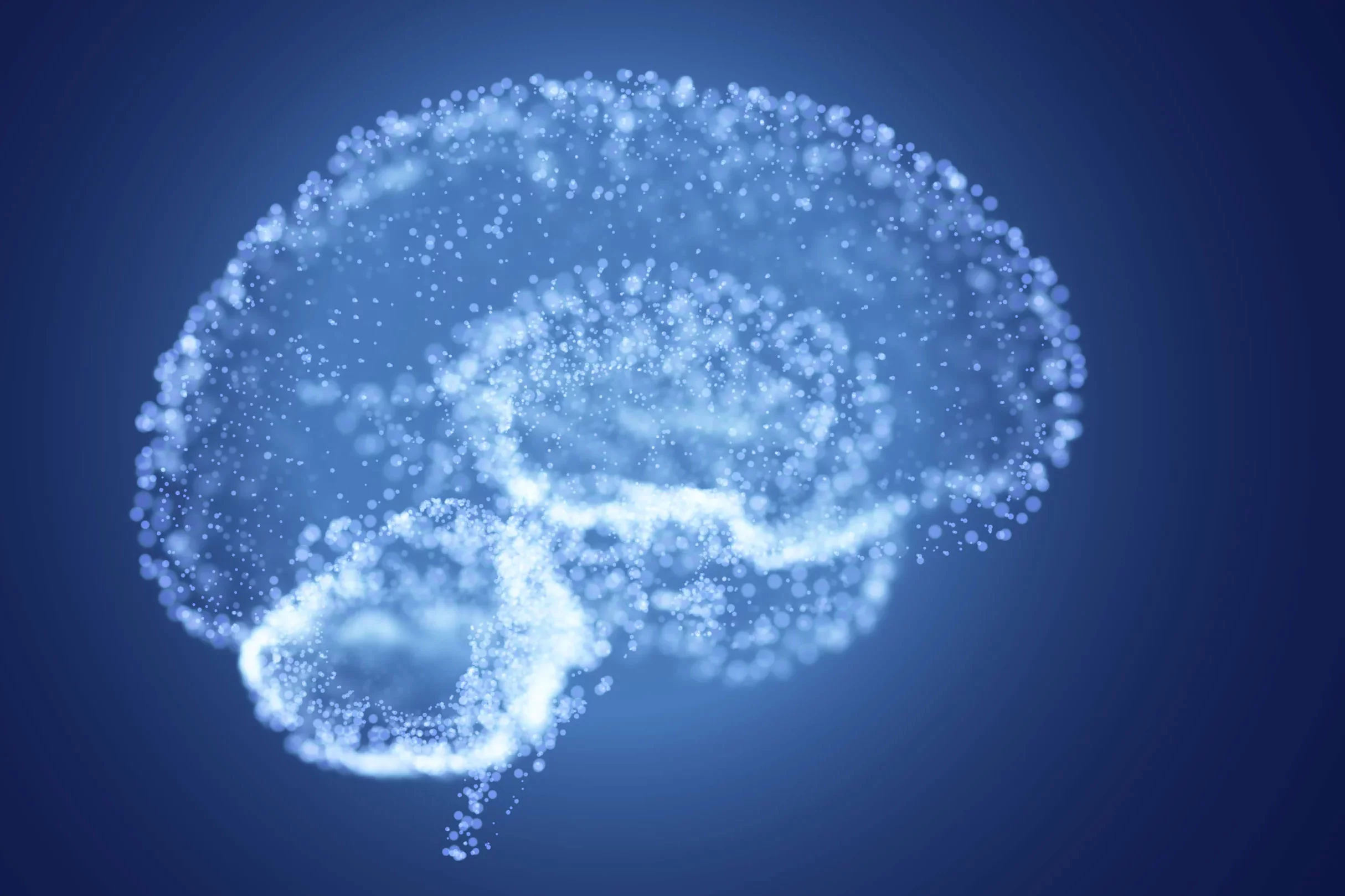Stellen Sie sich vor, Sie könnten lediglich anhand eines Fotos den weiteren Verlauf einer Krankheit vorhersagen. Das mag weit hergeholt erscheinen, es ist aber genau das erhoffte Ziel einer langjährigen Zusammenarbeit zwischen dem Team von G.V. Shivashankar am Paul Scherrer Institut PSI und dem Labor von Caroline Uhler am MIT. In einem kürzlich erschienenen Artikel in der Fachzeitschrift Nature Communications hat das Team mithilfe von künstlicher Intelligenz Zellen ausfindig gemacht, die auf die Alzheimer-Krankheit hindeuten, und zwar anhand der Packung von DNA in Bildern von Mäusegehirnen.
Verschiedenartigkeit ist in der Biologie wichtig. Zellen sind dynamisch, und die Art, wie sie in verschiedenen Bereichen des Körpers interagieren und sich entwickeln, spielt eine unumstössliche Rolle bei Krankheiten. Läuft in einer einzelnen Zelle etwas schief, kann sich dies ausbreiten und eine Krankheit verursachen. Es gibt zahlreiche Möglichkeiten, Informationen über die Funktionen einzelner Zellen nutzbar zu machen, sei es durch die Untersuchung des Genoms oder der produzierten Proteine. Angesichts Billionen von Zellen im Körper stellt sich allerdings eine entscheidende Frage in der biomedizinischen Forschung: Wie kann man diese Informationen mit räumlichen Daten kombinieren, um festzustellen, wo genau eine Krankheit ihren Ausgang hat? Shivashankar, Leiter des Labors für Biologie im Nanobereich am PSI und Professor für Mechanogenomik an der ETH Zürich, ist davon überzeugt, dass die Lösung in der mehrskaligen Bildgebung liegt. «Die nächste grosse Herausforderung besteht darin, die Zellfunktion anhand von Bildgebungsverfahren zu verstehen, denn in dem Moment, in dem ich sage, dass ich jeden Kieselstein am Strand verstehen will, wird es zu einem Big-Data-Problem.»
Die DNA-Packung gibt Hinweise
Dies ist ein Kernaspekt der Arbeit von Shivashankar und Uhler: der Einsatz künstlicher Intelligenz, um Informationen über den Zellzustand, wie z. B. Daten zur Genexpression oder Proteomik, mit Gewebebilddaten zu kombinieren. Eine Möglichkeit dazu besteht darin, Hinweise dafür zu erkennen, wie die DNA in den Zellen gepackt ist. «Tesla lernt, wo sich eine Strasse und ein Stoppschild befindet. Genauso zeichnen wir Bilder von der Packungsstruktur der DNA auf und erfahren so etwas über den Zustand der Zellen», erklärt Shivashankar.
Ausgestreckt würde die gesamte DNA einer menschlichen Zelle die Länge eines Tisches haben. In der Zelle ist sie in Chromosomen von etwa zehn Mikrometern Durchmesser gepackt. Wie sich herausstellt, ist die Art und Weise, wie die DNA gepackt ist, eng mit der Genexpression, der Proteinproduktion und der Zellfunktion verbunden. Bei vielen altersbedingten Krankheiten wie Krebs und neurodegenerativen Erkrankungen verändert sich die Packungsstruktur der DNA. Die in lichtmikroskopischen Aufnahmen deutlich sichtbare DNA-Packung kann daher ein hervorragender Biomarker für altersbedingte Krankheiten sein.
Das ist nur möglich, wenn man weiss, wie eine «gute» und «schlechte» DNA-Packung aussieht. Dazu nutzen die Forscher eine separate Datenquelle zur Zellfunktion und trainieren einen Algorithmus für maschinelles Lernen darauf, welche Packungsstruktur der DNA kranken und welche gesunden Zellen entspricht.
Erkennung von Biomarkern für die Alzheimer-Krankheit
Die jüngste Veröffentlichung in Nature Communications befasst sich mit der Alzheimer-Krankheit, die durch die Ablagerung von Proteinaggregaten, sogenannten Amyloiden, im Gehirn gekennzeichnet ist. «Wir haben uns gefragt, ob wir Alzheimer frühzeitig erkennen können», sagt Shivashankar. Zu diesem Zweck nutzten die Mitarbeiter Daten zur Genexpression – die sogenannte räumliche Transkriptomik –, die Aufschluss darüber gibt, welche Proteine eine Gewebezelle gleich produzieren wird.
Das Team entwickelte seine Verfahren mithilfe von Mäusen, die genetisch so verändert wurden, dass sie an Alzheimer erkrankten. Die Wissenschaftler entnahmen in regelmässigen Abständen Hirnschnitte und analysierten dabei die Genexpression und die DNA-Packung der einzelnen Zellen, während die Krankheit voranschritt. Indem die Forscher das Modell darauf trainierten, zu erkennen, wie die DNA in einer Zelle in der Nähe von Amyloid-Einschlüssen gepackt ist, konnten sie die Zellen – und die Bereiche des Gehirns – erkennen, in denen ein Fortschreiten der Krankheit bevorstand. «Mit diesem Verfahren wollen wir eine Karte erstellen, auf der wir erkennen können, wo im Gehirn die Krankheit schneller voranschreitet», erklärt Shivashankar. Dieses Verfahren der künstlichen Intelligenz, das auch auf andere Proteine und Krankheiten übertragbar ist, könnte eine leistungsfähige Basis sein, um zu verstehen, wie altersbedingte Krankheiten wie Alzheimer entstehen und letztlich Verfahren zu entwickeln, um frühzeitig eingreifen zu können.
Biologie trifft auf Big Data
Shivashankar hält die in dieser jüngsten Arbeit gezeigte Fähigkeit, mehrere Datenbereiche zusammenzuführen, für den Beginn einer Revolution in der biomedizinischen Forschung. Die Biologie ist ungeheuer komplex. Die räumliche Anordnung und die Beziehungen zwischen den zellulären Komponenten haben tiefgreifende Auswirkungen auf die biologische Funktion. «Auf molekularer Ebene von der Sequenz zur Struktur zu gelangen, ist eine Sache. Es kommt aber darauf an, wie die Proteine in der Zelle oder über einzelne Zellen hinaus im Gewebe zusammengebaut werden. Jede Zelle ist wie eine Stadt – sie muss räumlich und zeitlich organisiert sein», erläutert er. Künstliche Intelligenz und Informatik versprechen in Verbindung mit den richtigen biologischen Fragen und Datensätzen künftig neue Einblicke in die Biologie.
Kontakt
Prof. Dr. G.V. Shivashankar
Leiter des Labors für Biologie im Nanobereich
Paul Scherrer Institut PSI
+41 56 310 42 50
gv.shivashankar@psi.ch
Originalveröffentlichung
-
Zhang X, Wang X, Shivashankar GV, Uhler C
Graph-based autoencoder integrates spatial transcriptomics with chromatin images and identifies joint biomarkers for Alzheimer’s disease
Nature Communications. 2022; 13(1): 7480 (17 pp.). https://doi.org/10.1038/s41467-022-35233-1
DORA PSI



